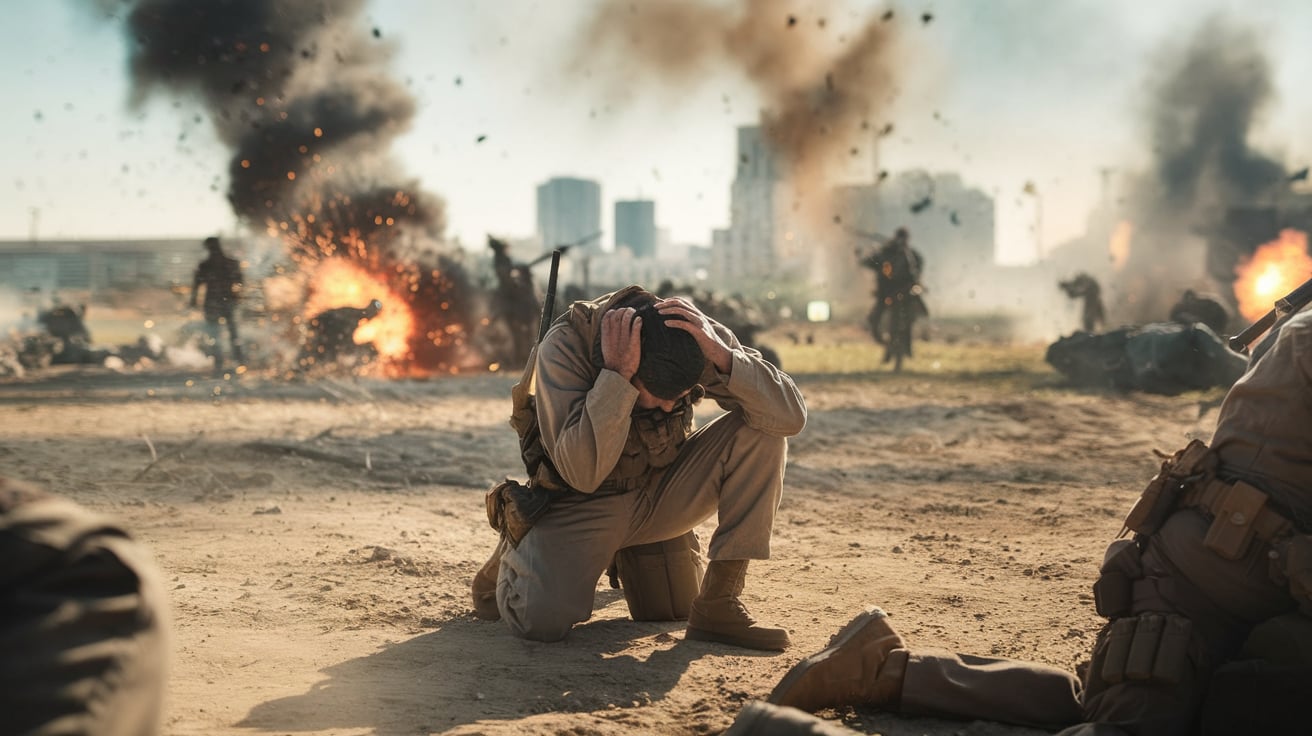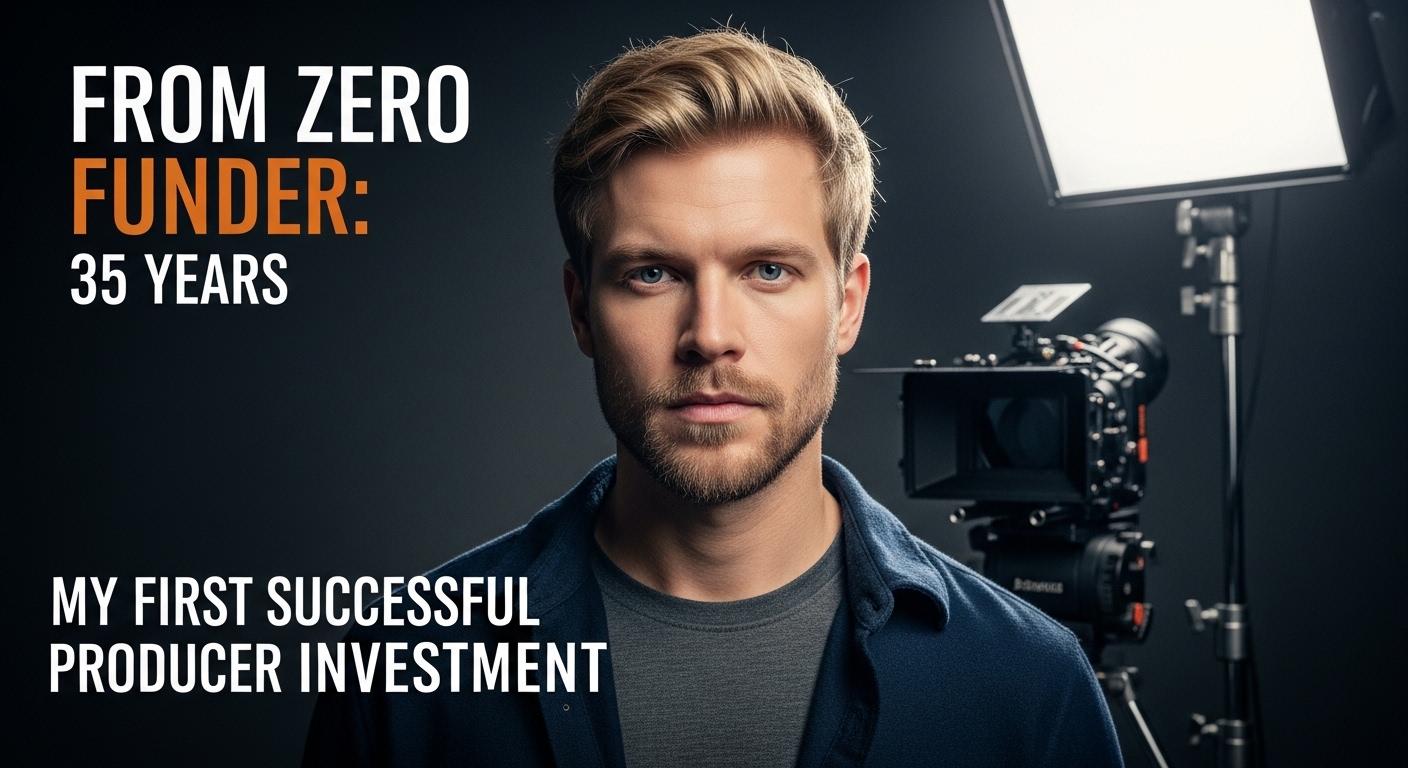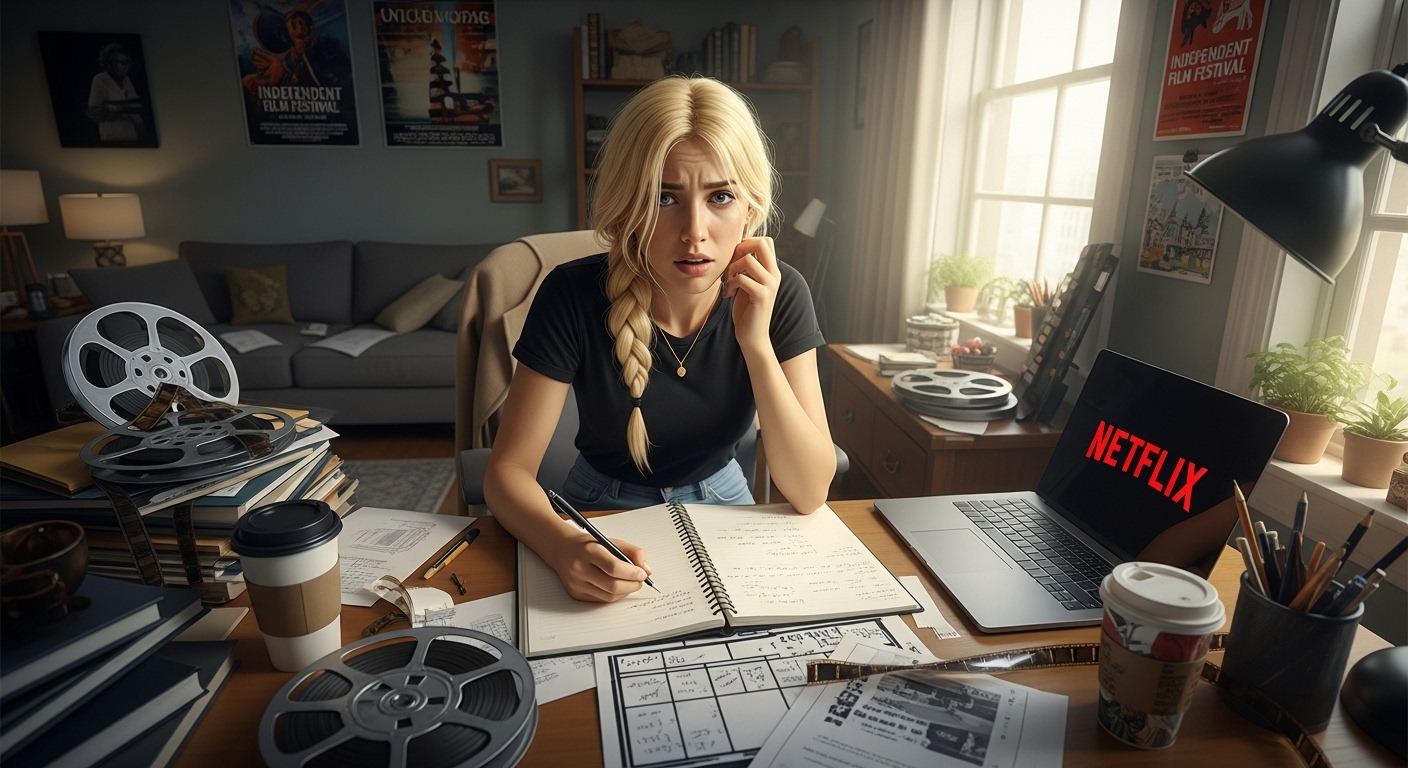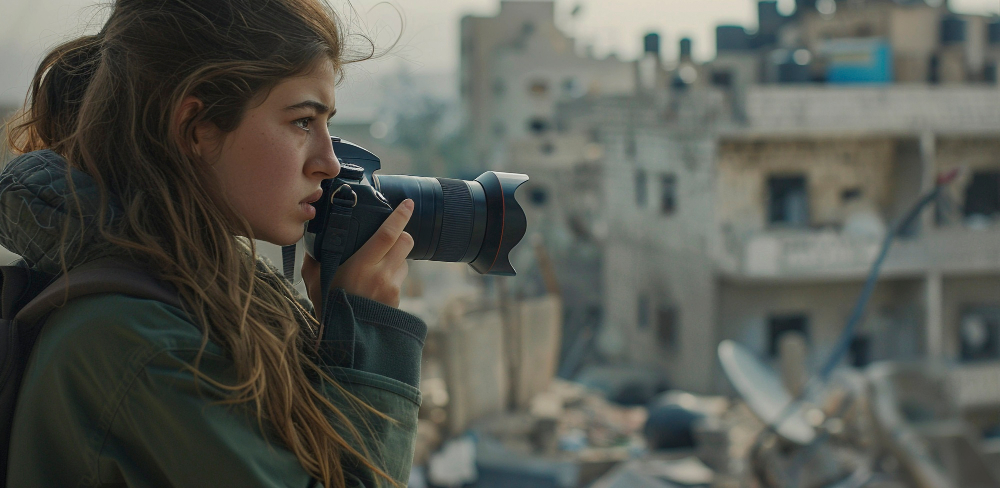Cinematography is the heartbeat of storytelling in film. It shapes how we perceive characters and their journeys, illuminating emotions and enhancing narratives. Yet, there’s a stark contrast between independent films and big-budget blockbusters when it comes to this art form.
Independent filmmakers often face the challenge of limited resources, which can spark a unique brand of creativity. This resourcefulness leads to innovative lighting setups, unconventional lens choices, and an exciting raw aesthetic that breathes new life into cinematographic techniques.
In contrast, studio blockbusters wield vast budgets that allow for flawless execution but often rely heavily on established formulas. While they may dazzle us with eye-popping visuals and cutting-edge technology, they can sometimes miss the intimate connection found in smaller productions.
Independent films capitalize on spontaneity; their run-and-gun shooting style captures organic moments that leave a lasting impact. With fewer constraints, indie cinematographers are free to explore diverse visual styles and experiment boldly—pushing traditional boundaries while creating distinctive images that stand out in an oversaturated market.
As we dive deeper into this topic, we’ll examine how these differences shape not just the look of a film but also its soul—the intimate character-driven stories that inspire empathy and connection versus the grand spectacles aiming for mass appeal. Join us as we unravel these cinematic contrasts and discover how limitations often lead to extraordinary creativity in the world of independent filmmaking.
Creative Solutions Amidst Limitations.
In the world of independent films, cinematographers often face significant constraints due to limited access to high-end equipment. These limitations, however, can spark creativity that leads to outstanding visual storytelling. Unlike big-budget studios with their extensive inventory of state-of-the-art cameras and lighting gear, indie filmmakers must make the most of what they have. This scenario pushes them to devise innovative lighting setups that could achieve striking results on a shoestring budget.
For example, consider the use of practical lights in indie productions. Instead of relying solely on expensive lighting rigs, cinematographers might illuminate scenes with simple light bulbs integrated into the set design. Such choices not only enhance authenticity but also contribute to unique textures and shadows that elevate the emotional depth of a scene. Films like “Moonlight” demonstrate how these creative approaches can yield stunning aesthetics while maintaining budgetary considerations.
Additionally, hand-held camera work is a hallmark of many independent films. The absence of complex stabilizing systems often found in larger productions forces filmmakers to adopt a more raw and immediate style. This technique can provide an intimate feel—drawing viewers closer to characters and emotions—and immersing them in the narrative’s reality. A prime example is “The Florida Project,” where handheld shots immerse audiences in the vibrant yet challenging world experienced by its young protagonists.
Lastly, limited resources lead indie filmmakers to experiment with unconventional lens choices as well. Instead of standard setups that rely heavily on prime lenses or ultra-zoom capabilities, some may opt for vintage glass or even DIY lens modifications to achieve distinct looks.
The film “Tangerine,” shot entirely on an iPhone with attached lenses, showcases how innovation arises from these constraints—yielding highly memorable visuals that break convention while still delivering powerful stories. Each creative decision reflects an authentic voice shaped by necessity rather than indulgent excesses found within studio frameworks.
Tighter Budgets and Resourcefulness.
Independent films often operate on significantly tighter budgets than their big-budget counterparts, which compels filmmakers to be incredibly resourceful. With limited funds, each dollar spent must count towards creating a compelling story. This financial constraint leads to creative problem-solving and innovative thinking when it comes to utilizing existing locations, props, and gear. For example, many indie filmmakers have turned their own homes or local spaces into film sets. A simple living room might transform into a bustling cafe with clever set dressing and lighting adjustments.
In an independent production, the use of natural settings can also amplify storytelling without the need for extravagant designs or special effects. Filmmakers often scout for locations that naturally resonate with the narrative they want to share.
Consider “The Florida Project,” a film shot in motels and neighborhoods in Orlando; these everyday environments become integral characters themselves in the tale of childhood innocence amidst tougher realities. By incorporating real-world locations, filmmakers not only save money but also ground their stories in authenticity that audiences can connect with.
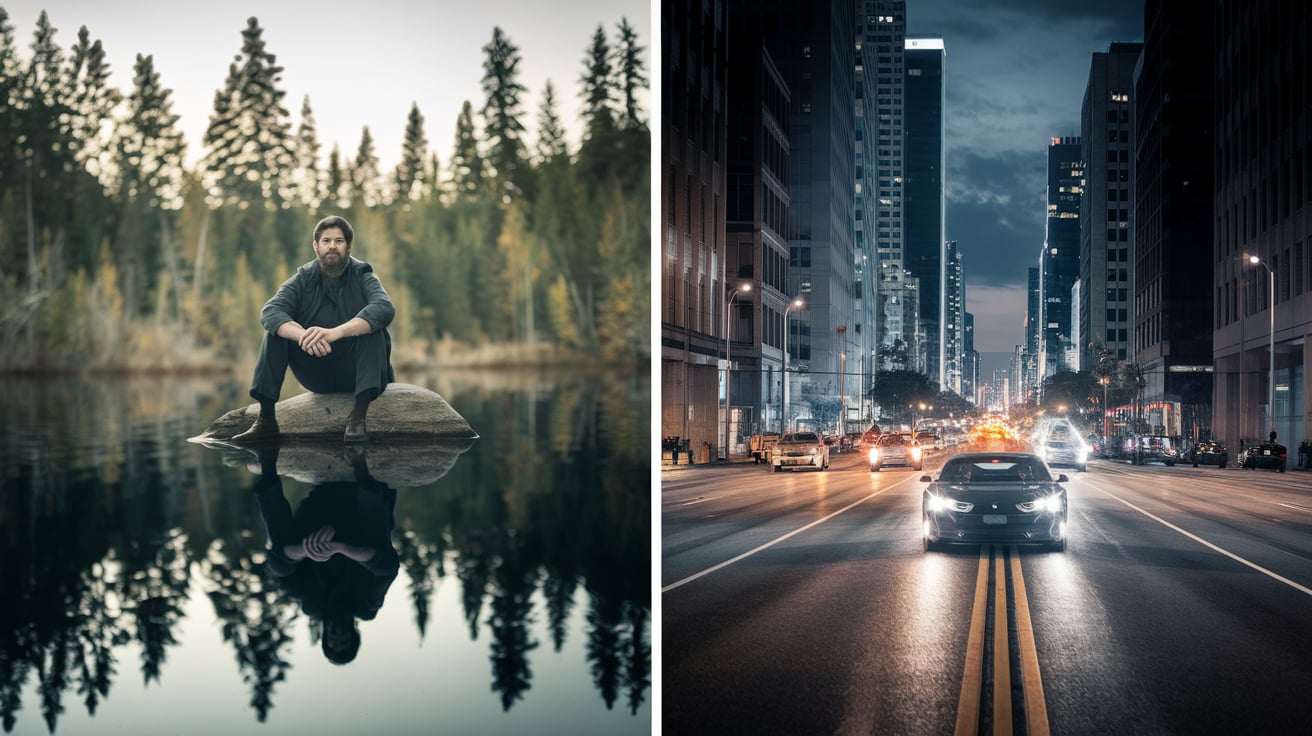
Prop usage is another area where independents shine through creativity. Rather than splurging on expensive set pieces, indie films often rely on thrift stores or community donations to fill out scenes meaningfully. A well-chosen vintage piece can tell as much about a character’s past as any dialogue could express. The meticulousness behind choosing props fits within the broader narrative framework while cleverly stretching resources.
These constraints don’t just challenge filmmakers; they unlock unique opportunities for expression and creativity that may be overlooked in larger productions where budget excess allows for limitless possibilities.
As indie filmmakers blend ingenuity with authenticity, they craft visuals rich with context—an approach sometimes lost amid studio grandiosity but one that’s essential for genuine storytelling. I also wrote about >>>>> Importance of camera movement in cinematography which you may read after completing this article.
Run and Gun Shooting Style.
Independent filmmakers often embrace a run and gun shooting style that starkly contrasts with the meticulous planning of big-budget movies. This approach allows for greater flexibility and spontaneity, enabling crews to adapt quickly as scenes unfold.
In indie films, capturing raw emotion or fleeting moments matters more than perfection. For instance, during the making of “The Florida Project,” director Sean Baker relied heavily on the natural light available at his locations—motel courtyards and nearby parks—to give the film an authentic feel that invites the audience into the characters’ lives.
Using found locations plays a crucial role in creating this immediate sense of place. A simple street corner or an abandoned building can serve as a backdrop for pivotal scenes, showcasing both creativity and resourcefulness.
These settings often have a character of their own, adding depth without needing elaborate set designs or special effects. Filmmakers such as Andrea Arnold take advantage of urban landscapes in her works like “American Honey,” allowing viewers to experience an immersive story woven tightly into real-world environments.
Moreover, independent films usually prioritize harnessing natural light over elaborate lighting setups. This choice enhances the film’s documentary-like quality while reducing setup time. The use of natural light allows cinematographers to maintain authenticity by reflecting real-life conditions rather than artificial enhancements. Think about how Richard Linklater captured everyday life in “Before Sunrise,” letting sunlight filter through café windows to create intimate conversations between characters.
In this fast-paced world of indie filmmaking, spontaneity becomes an asset rather than a liability. Because budgets do not accommodate endless takes or elaborate shots, crews learn to be instinctive problem solvers on set. Every decision must be made quickly but thoughtfully; every moment counts when you’re racing against time and budget constraints. The result is often vivid storytelling infused with genuine interaction—something less frequently seen in high-budget productions where extensive planning rules dictate how films are produced and ultimately perceived.
Greater Experimentation with Unconventional Techniques and Visual Styles.
In the realm of independent filmmaking, artists often feel liberated to push boundaries and explore unconventional techniques. With fewer restrictions from studios or financial backers, indie filmmakers can take creative risks that might be deemed too far-fetched for big-budget projects.
For example, films like “The Florida Project” employ a vibrant color palette and immersive handheld camera work, giving viewers an intimate look at its characters’ lives while creating an off-kilter sense of realism. This emphasis on experimentation not only leads to visually striking narratives but also fosters unique storytelling methods.
Another hallmark of independent films is their willingness to embrace avant-garde styles that defy traditional cinematic conventions. In movies such as “Eraserhead,” director David Lynch utilized stark black-and-white imagery combined with surreal compositions to evoke a sense of dread and mystery.
Such choices inherently highlight the filmmakers’ desire to create art rather than just entertainment. By seeking out unexpected angles, unorthodox framing, or even utilizing non-linear story structures, indie films frequently cultivate an emotional response in ways that may not align with mainstream expectations.
Moreover, the freedom afforded by limited budgets encourages a do-it-yourself mentality among independent cinematographers. Many turn to practical effects instead of relying heavily on CGI—adding authenticity that enhances viewer connection to the material. For instance, in “Swiss Army Man,” directors Daniel Scheinert and Daniel Kwan crafted imaginative solutions using everyday items to represent complex themes, resulting in visual originality that stands apart from typical blockbuster tropes.
Ultimately, the experimental nature of indie cinematography cultivates fresh ideas and perspectives in filmmaking at large. These bold artistic choices resonate with audiences looking for something beyond formulaic storytelling or glossy visuals often seen in high-budget productions. By embracing challenges and limitations head-on, independent filmmakers redefine what is possible behind the camera while keeping viewers engaged through inventive visual narratives.
Intimate Character-Driven Stories Enable Closer Shots and Shallow Focus.
In independent films, storytelling often focuses deeply on characters and their emotional landscapes. This character-driven approach invites cinematographers to use closer shots. By bringing the audience in tight, filmmakers can capture subtle facial expressions and emotions that might be overlooked in larger productions.
A prime example is the film “Lady Bird,” where intimate close-ups of Saoirse Ronan create a connection with her character’s hopes and struggles. Such techniques enhance the viewer’s engagement and allow for a more personal storytelling experience.
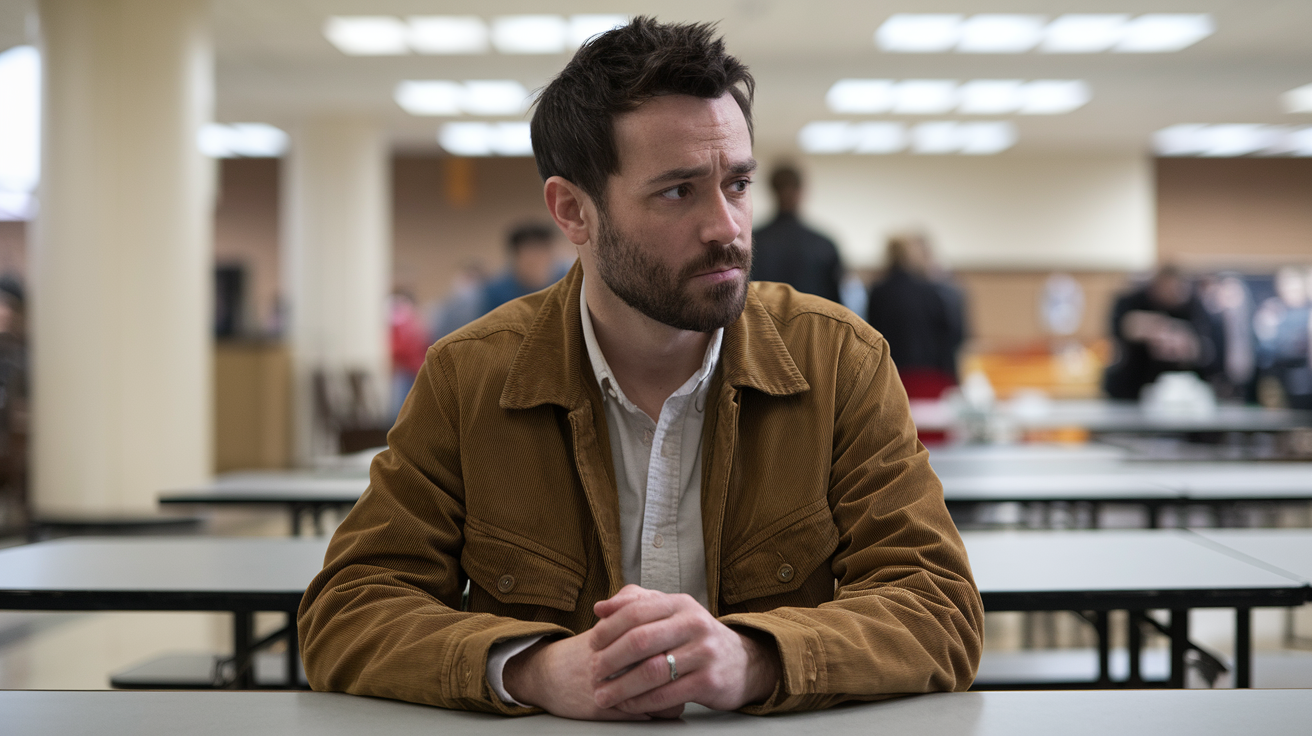
Additionally, shallow focus becomes a powerful tool for indie filmmakers. This technique draws attention to specific elements within a frame while blurring out distractions in the background. For instance, in “Moonlight,” the use of shallow depth of field emphasizes the protagonist’s isolation and internal conflict amidst chaotic surroundings. The cinematography actively shapes how we perceive characters’ experiences, highlighting their journey through life without overwhelming visual noise.
Low-budget films often rely on natural lighting or minimal setups to achieve these intimate shots. Instead of large crew setups requiring extensive equipment, independent filmmakers can shoot quickly and efficiently using available light sources. This flexibility allows for spontaneous moments that can feel raw and authentic—qualities increasingly favored by modern audiences seeking genuine storytelling over polished spectacles.
By prioritizing closeness and emotional nuance, independent cinema distinguishes itself from mainstream blockbusters dominated by grand visuals and spectacle. It transforms simplicity into strength, granting viewers profound insight into its characters’ lives while inviting them on an introspective journey unlike anything found in conventional filmmaking.
Collaboration and Multitasking in Indie Films.
In independent filmmaking, collaboration is not just encouraged; it’s essential. Unlike big-budget productions that often operate within rigid union structures, indie films thrive on a sense of camaraderie. Crew members wear multiple hats, stepping outside traditional roles to get the job done.
A cinematographer might also handle lighting or grip work, while an editor could be called upon to aid with sound design. This multitasking fosters creativity and allows for a more fluid production process, where everyone contributes their skills to create a cohesive vision.
For example, take the acclaimed indie film “The Florida Project.” The crew behind this poignant narrative included individuals who juggled several responsibilities during filming. This flexibility allowed them to adapt quickly to the whims of their shooting locations and actors without being bogged down by red tape or inflexible schedules.
Their willingness to collaborate inspired many creative solutions that ultimately enriched the film’s visual style. Shots taken in natural light were made possible because the team collectively determined how best to capture each moment.
Additionally, this collaborative spirit often leads to innovation and risk-taking within indie cinema. When resources are limited and time is of the essence, crews rely heavily on each other’s instincts and ideas rather than strictly adhering to established protocols.
This environment can result in unexpected cinematographic decisions that distinguish indie films from conventional fare—such as using unconventional angles or employing unique camera movements designed on-the-fly based on location dynamics.
Ultimately, the passion-driven collaboration seen in independent films allows for a different kind of storytelling experience—one that embraces spontaneity over meticulous planning. The blend of diverse talents fine-tunes the visual language of unaffiliated filmmakers, enabling them to break free from constraints imposed by larger studios while delivering imaginative cinematic experiences born from genuine teamwork.
This synergy enriches both the production process and viewing experience alike while underscoring the adaptability intrinsic to indies—a stark contrast to their blockbuster counterparts.
Post-production limited to fewer visual effects options.
In the world of independent filmmaking, post-production often unfolds under strikingly different circumstances compared to big-budget productions. With tighter budgets and fewer resources, indie films usually have limited access to extensive visual effects (VFX) or high-end editing suites. This restriction can be seen as a double-edged sword; while it may constrain the filmmakers’ ability to incorporate extravagant special effects, it also encourages creativity in storytelling and visual aesthetics.
For instance, consider the critically acclaimed indie film “The Florida Project.” The filmmakers chose to emphasize naturalistic storytelling and vibrant colors rather than relying on any significant digital manipulation. This approach allows audiences to connect more intimately with the characters and their environment.
By using practical locations and minimal VFX, they enhanced the emotional impact without leaning on spectacle. In contrast, a large-scale blockbuster may depend heavily on CGI to create fantastical worlds, sometimes overshadowing character development in favor of dazzling visuals.
Additionally, many indie filmmakers have embraced techniques like practical effects or innovative camera work instead of computer-generated imagery. This fosters an authenticity that resonates with viewers; the rawness becomes an integral part of the story’s charm. Consider films like “Moonlight,” which balances a rich narrative with grounded visuals that don’t distract from the emotional journey—but rather enhance it through subtlety.
Finally, working with limited VFX forces indie filmmakers to rely more on strong cinematography and sound design to tell their stories effectively. The absence of flashy effects means that every shot must carry weight and relevance.
This singular focus encourages authorship—leading directors, such as Greta Gerwig in “Lady Bird,” develop unique styles defined by mood rather than spectacle. As a result, these restrictions push artists toward inventive solutions that ultimately elevate their craft while telling profound stories within simple frameworks—highlighting that sometimes less truly is more in cinema.
Necessity for Efficiency Demands Instinctive Problem Solving and Pragmatic Choices.
In the world of independent filmmaking, efficiency is often a driving force behind creative decisions. With limited resources and tight schedules, every moment on set counts. This pressure pushes filmmakers and cinematographers to think on their feet. They frequently face challenges that require quick solutions, whether that means adjusting lighting setups on the fly or repurposing props to achieve a desired effect.
For example, during the filming of “The Florida Project,” director Sean Baker utilized whatever colorful elements were available in the real-world locations around Orlando. The vibrant street art and crowded neighborhoods helped create an authentic backdrop without relying heavily on sets or extensive pre-production planning.
This instinctive problem-solving approach extends beyond just physical adjustments; it heavily influences artistic choices as well. Independent cinematographers are often compelled to adopt unconventional shooting techniques due to budgetary constraints.
Instead of using elaborate rigs, they might rely on handheld cameras to capture spontaneous moments that reflect raw emotions, lending an intimate feel to their films. A prime example can be found in the film “Tangerine,” which was shot entirely on an iPhone. The filmmakers leveraged this offbeat method to produce an authentic narrative while fostering innovation within the restrictions imposed by their resources.
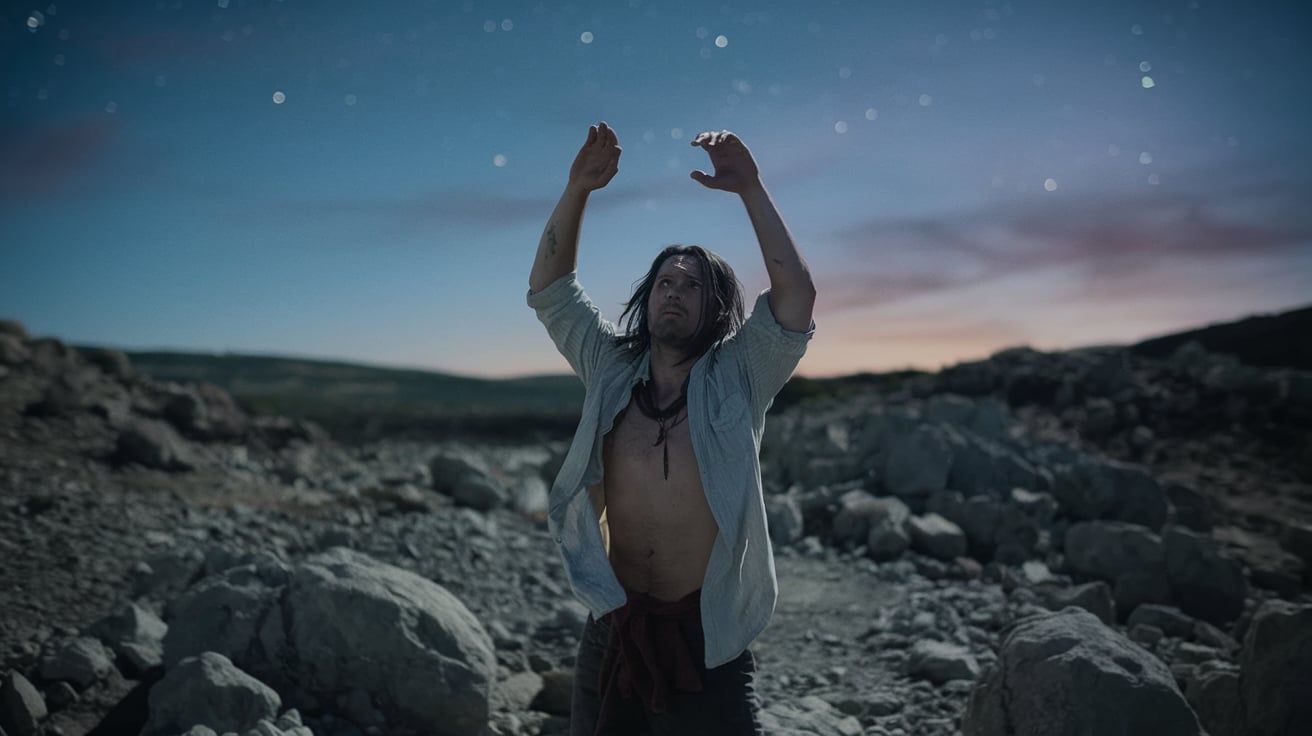
Pragmatism also plays a crucial role in collaborative efforts among small crews. Unlike big-budget movies that typically have specialized departments—each with stringent roles—indie projects thrive on adaptability and teamwork.
Crew members wear multiple hats, allowing for seamless communication and quicker decision-making processes. This fluid environment encourages creativity, enabling cinematographers to experiment with shots and visuals as they unfold naturally rather than adhering strictly to preconceived plans.
Ultimately, this need for efficiency not only shapes how independent films look but also enhances storytelling possibilities. It fosters a design ethos where visual finesse stems from necessity rather than excesses in equipment or technology, resulting in striking originality unique to indie cinema. In learning how to navigate limitations through creative ingenuity, independent filmmakers reveal new paths for artistry that resonate deeply with audiences craving fresh perspectives.
Opportunities for Authorial Creativity Beyond Big-Budget CGI Spectacle.
Independent films frequently allow cinematographers to explore their distinct voices and styles without the constraints of studio expectations. While big-budget movies often rely on high-end special effects and sophisticated CGI to captivate audiences, indie filmmakers focus on storytelling through innovative visual techniques.
This freedom fosters a sense of experimentation that can lead to striking originality. For instance, “Moonlight,” directed by Barry Jenkins, used natural lighting and set designs that perfectly complemented its narrative, allowing the emotional subtleties of the story to shine through without excessive visual effects.
In contrast to the formulaic approach sometimes seen in major productions, independent filmmakers can prioritize artistic intent over commercial viability. They aren’t tethered to a franchise or an established brand—this opens doors for bolder choices.
For example, Sofia Coppola’s “Lost in Translation” employs unique framing and color palettes to evoke feelings of isolation and connection in a foreign land, showcasing how personal experiences drive visual decisions beyond just entertainment value. Such films highlight character emotions with intimate close-ups and unconventional angles that resonate deeply with viewers.
Additionally, these projects often emphasize rawness and authenticity over glossy perfection. The cinematography in indie films like “The Florida Project,” shot by Alexis Zabe, showcases real locations with unpolished charm.
The handheld camera work immerses viewers in the daily lives of its characters while highlighting social issues faced by individuals often marginalized in mainstream media. By eliminating barriers like heavy post-production effects or artificial lighting setups, these storytellers create a more relatable atmosphere—a vital aspect when targeting niche audiences.
In short, limited resources encourage independent filmmakers to craft narratives anchored in genuine experiences rather than spectacle-driven visuals. This opportunity for creative exploration nurtures innovative approaches against conventional cinema biases; such inventiveness resonates deeply with audiences in ways that might be overlooked within blockbuster filmmaking’s polished surface. Consequently, independent cinematographers continually redefine what it means to engage viewers through compelling imagery that values emotional resonance over sheer spectacle.
Lower Financial Risk Allows for Bolder Artistic Decisions.
In the world of independent cinema, financial constraints often pave the way for greater artistic freedom. Independent filmmakers operate on smaller budgets, which inherently means that they also face lower financial risks. This structure allows directors and cinematographers to explore unique visual styles and narrative techniques without the looming pressure of high-stakes box office returns. The focus shifts from merely pleasing the masses to fostering creative expression.
For instance, consider films like “Moonlight” directed by Barry Jenkins. With a modest budget of just $1.5 million, it garnered critical acclaim and even won an Academy Award for Best Picture. The film’s use of vibrant color palettes and intimate framing demonstrates how a lack of financial pressures can lead to bold choices that resonate emotionally with audiences.
Similarly, “The Florida Project,” directed by Sean Baker, utilized natural light and non-professional actors to create a raw and authentic representation of life in poverty. These artistic decisions were not just cost-effective; they defined both movies’ distinct visual identities.
The lower stakes associated with funding also allow independent filmmakers to tackle unconventional subjects or narratives that might be deemed too risky for larger studios. In “Swiss Army Man,” directors Daniel Kwan and Daniel Scheinert (collectively known as Daniels) incorporated surreal elements into their storytelling—transforming unusual concepts into something accessible yet profound.
This fearlessness in experimentation contrasts sharply with big-budget blockbusters where studios tend to stick closely to formulaic structures and established brands.
As indie filmmakers forge their own paths outside traditional norms, they often discover unique ways to tell meaningful stories through captivating visuals. Their willingness to embrace risk encourages them to push boundaries creatively, ensuring that their work stands out against the backdrop of conventional filmmaking landscapes dominated by CG-heavy spectacle. This artistic courage is what ultimately allows independent films not only to thrive amidst adversity but also to leave a lasting impact on their audience.
Embracing Limitations for Creative Freedom.
Independent cinematographers often turn constraints into opportunities. They embrace limitations like budget and equipment access as a way to spark originality. This approach leads to striking visuals that stand out in a crowded marketplace. By experimenting with unconventional techniques and focusing on intimate storytelling, they create a unique aesthetic that resonates with audiences.
In contrast to the polished look of big-budget blockbusters, indie films showcase creativity born from necessity. Each choice, whether it’s relying on natural light or using found locations, contributes to an authentic viewing experience. Ultimately, it is this resourcefulness and passion that defines independent cinema’s distinct voice and vision in the world of filmmaking.

I am a highly experienced film and media person who has a great deal to offer to like-minded individuals. Currently working on several exciting projects, I am a film and media practitioner for over a decade. I have achieved a great deal of success in my professional career.
